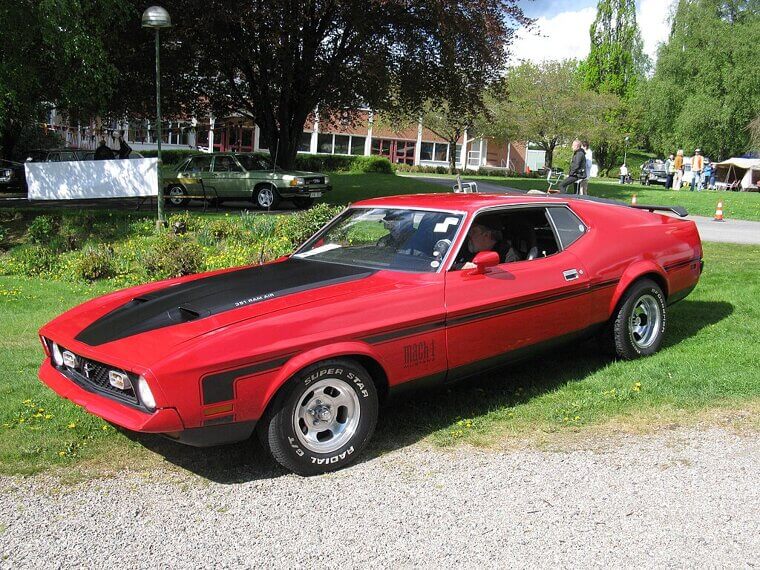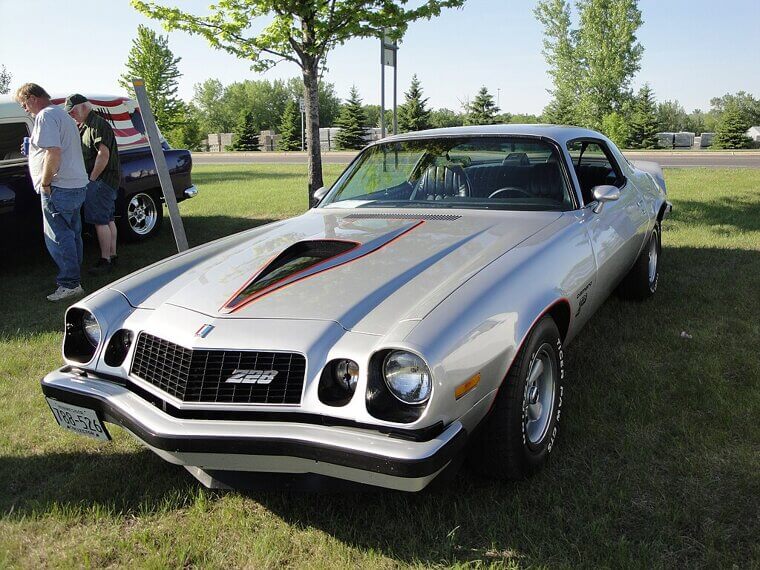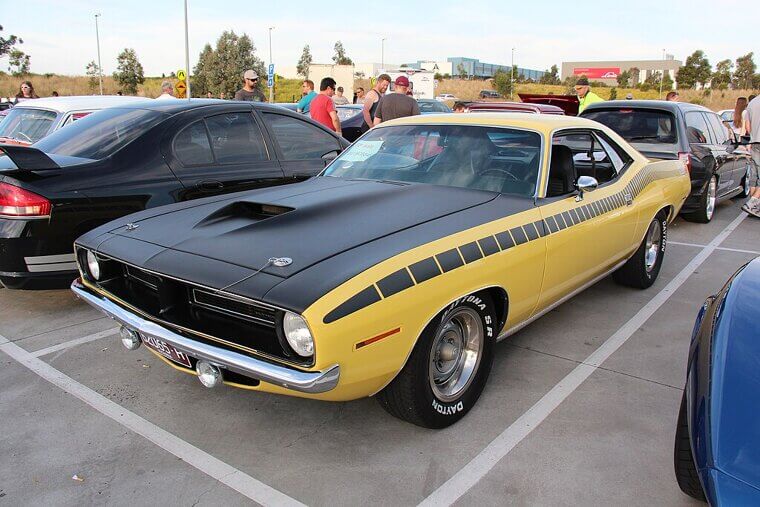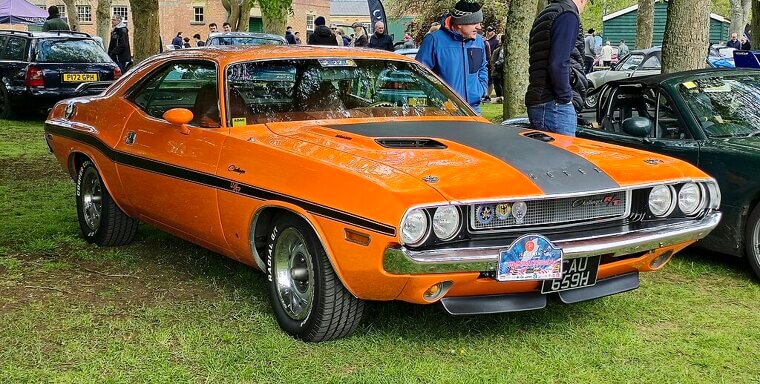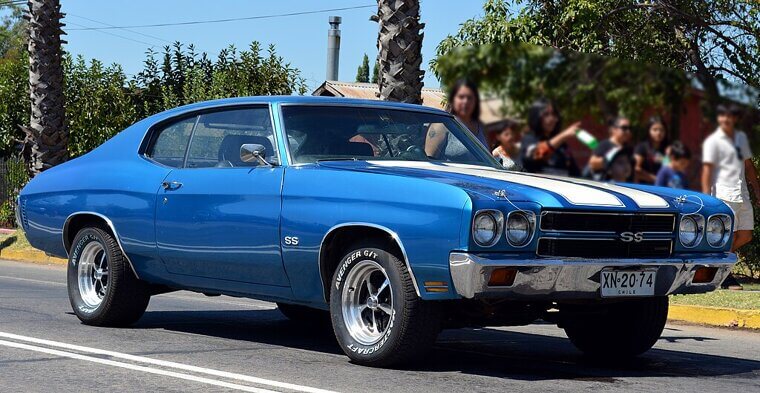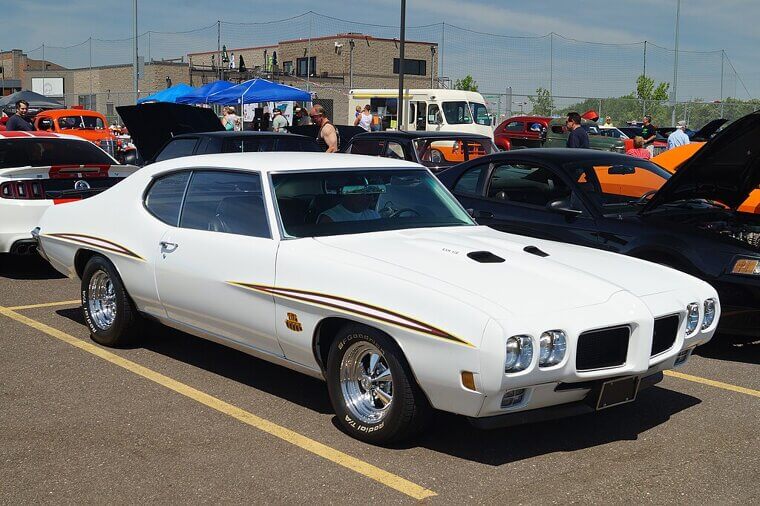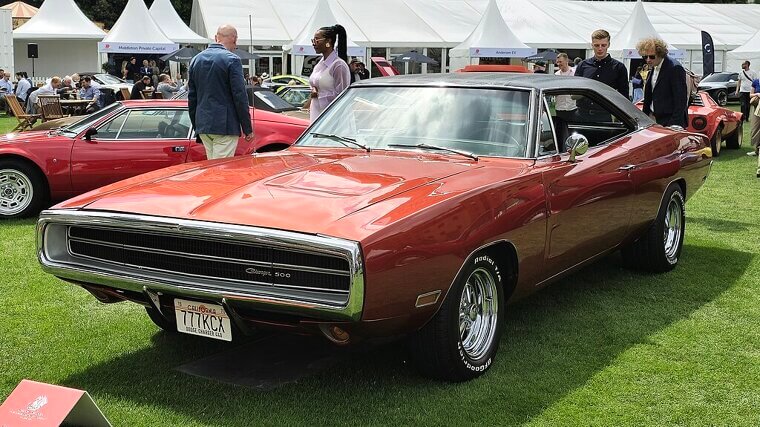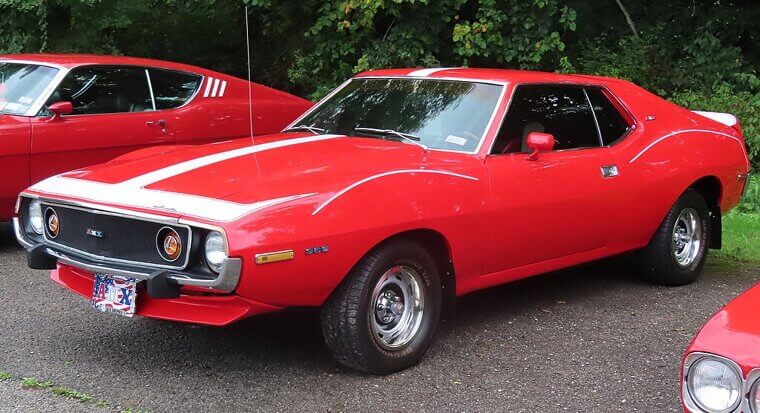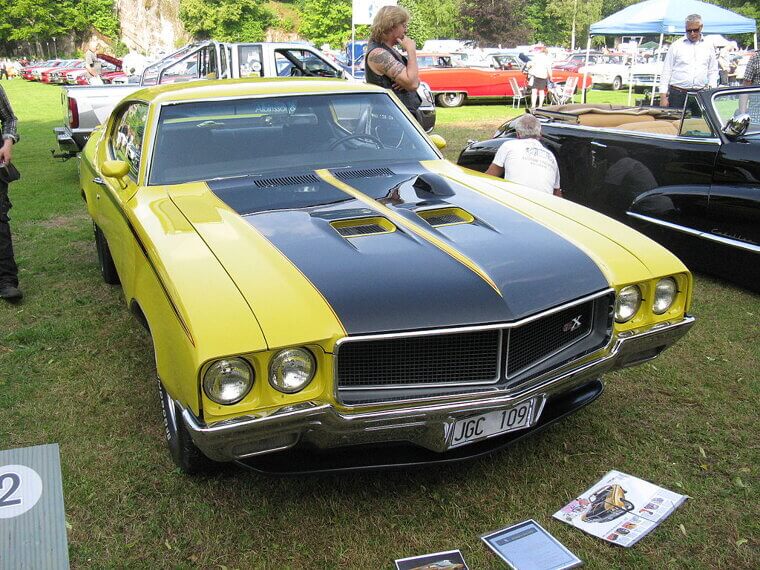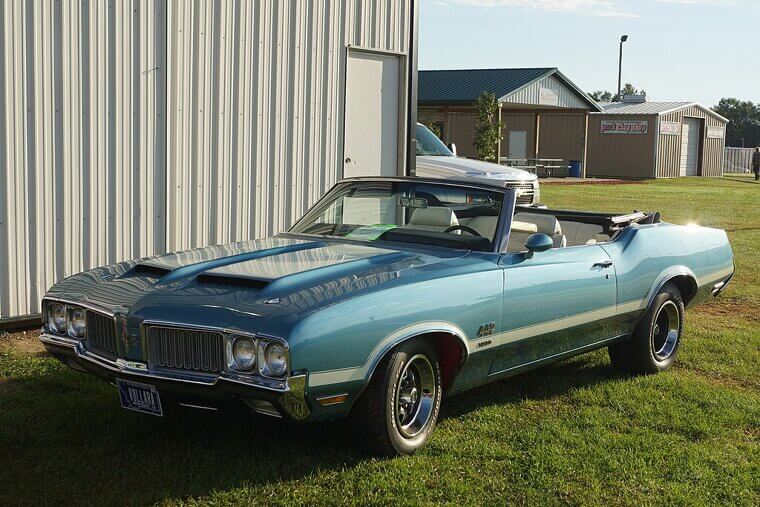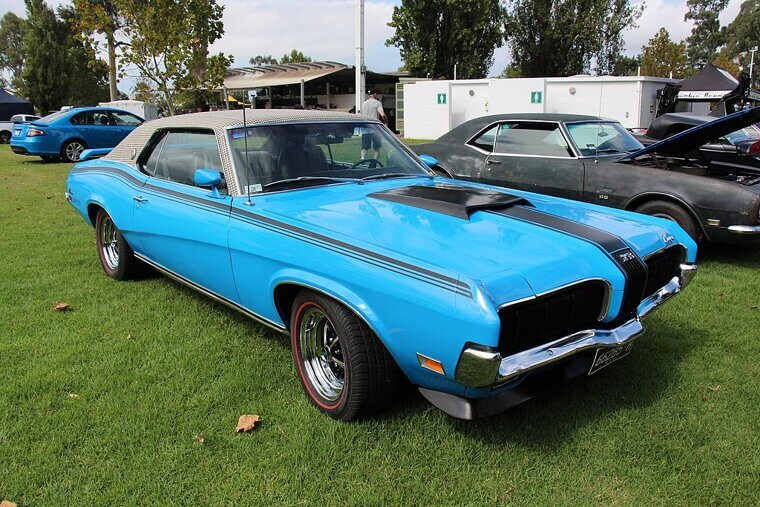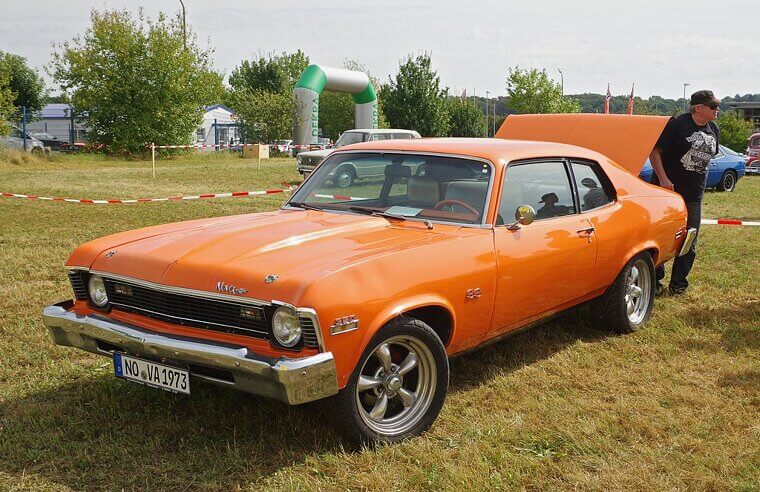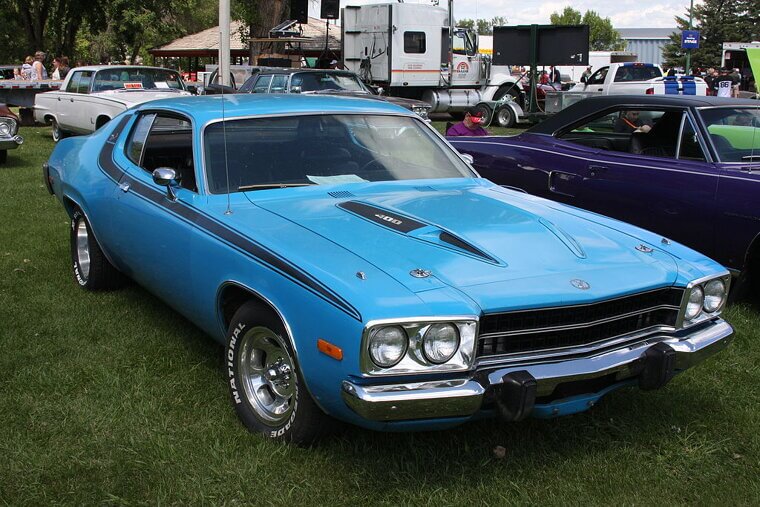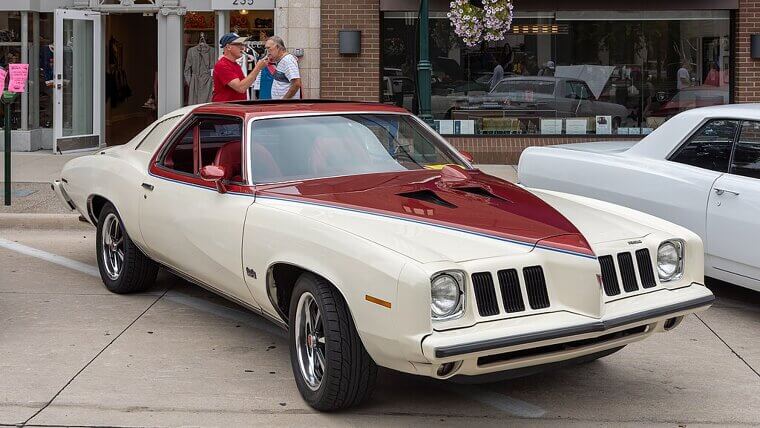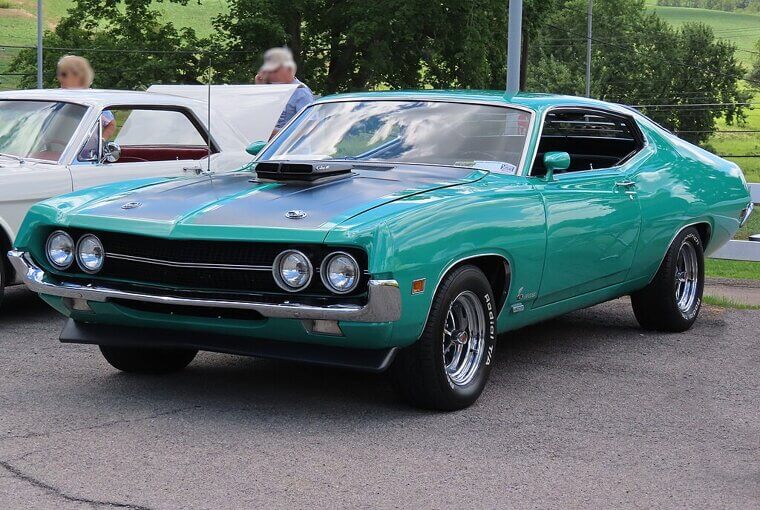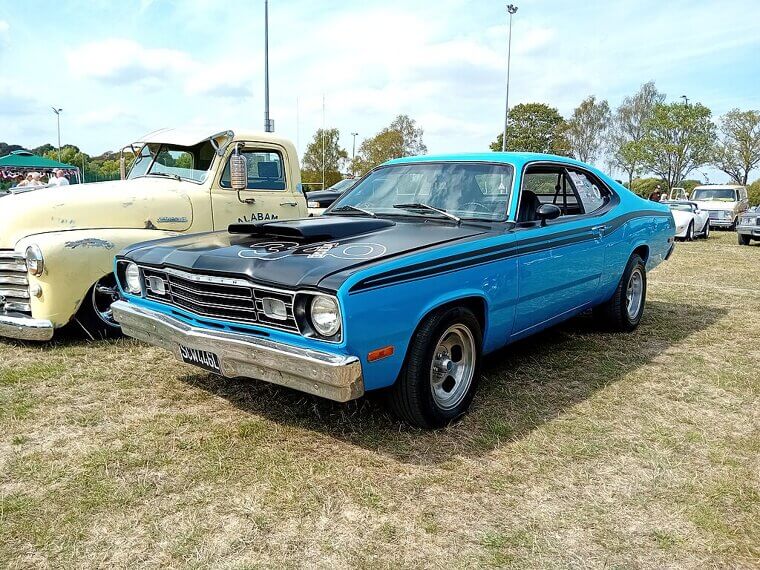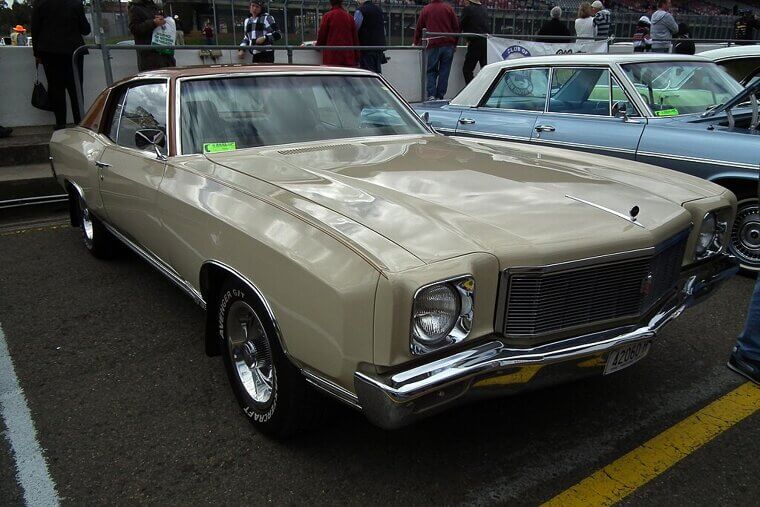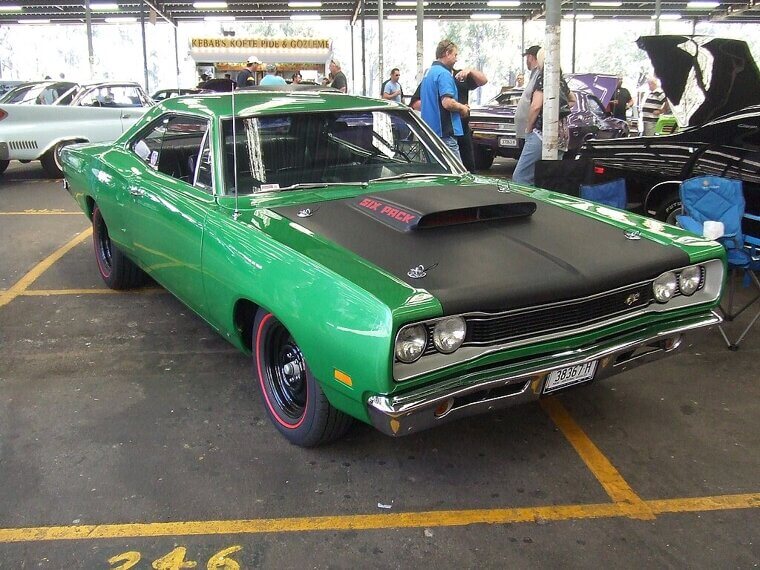Ford Mustang Mach 1 (1971-1973)
By the early ’70s, the Mustang had bulked up like a prizefighter after too many protein shakes. With its big engine, big hood and big attitude, the Mach 1 wasn’t about subtlety, it was about statement! SPurists grumbled about its growing waistline, but when you dropped a 429 Cobra Jet into it, all complaints vanished in a cloud of tire smoke.
Its bold looks and booming soundtrack captured the decade’s drama perfectly. Today, the Mach 1 name lives on, reborn in modern form - a beautiful echo of muscle car glory. It’s the car that proved the Mustang could evolve without losing its snarl.
Its bold looks and booming soundtrack captured the decade’s drama perfectly. Today, the Mach 1 name lives on, reborn in modern form - a beautiful echo of muscle car glory. It’s the car that proved the Mustang could evolve without losing its snarl.
Chevrolet Camaro Z/28 (1970-1981)
By 1970, the Camaro had traded its clean-cut ’60s charm for something wilder - a low-slung, broad-shouldered beast that looked ready to brawl. The Z/28 was the sharpest of the pack: nimble, aggressive, and perfectly tuned for backroad heroics. It was muscle car evolution, a sleeker, more civilized kind of brute.
And yet, despite emissions crackdowns and gas crises, the Camaro refused to lose its swagger. Its DNA lives on in today’s models, which still wear that familiar smirk. The Z/28 of the ’70s remains a love letter to adrenaline; the kind that smells faintly of gasoline and victory.
And yet, despite emissions crackdowns and gas crises, the Camaro refused to lose its swagger. Its DNA lives on in today’s models, which still wear that familiar smirk. The Z/28 of the ’70s remains a love letter to adrenaline; the kind that smells faintly of gasoline and victory.
Plymouth Hemi ’Cuda (1970-1971)
The Plymouth Hemi ’Cuda wasn’t a simple car, it was an event. With its shaker hood, thunderous 426 Hemi V8, and shark-like stance, it didn’t purr, it proclaimed. The ’Cuda was pure excess, built for drivers who wanted to announce their arrival before they even turned the key.
Its rarity has made it a legend among collectors, a holy grail of high-octane Americana. Even today, nothing sounds quite like that Hemi under load. It’s loud, unapologetic, and absurdly cool, like the muscle car equivalent of a guitar solo that never ends. Modern challengers may try, but few ever match its attitude.
Its rarity has made it a legend among collectors, a holy grail of high-octane Americana. Even today, nothing sounds quite like that Hemi under load. It’s loud, unapologetic, and absurdly cool, like the muscle car equivalent of a guitar solo that never ends. Modern challengers may try, but few ever match its attitude.
Dodge Challenger (1970-1974)
The 1970 Challenger arrived like a heavyweight champ stepping into the ring: broad shoulders, booming voice, and a mean right hook. Built on the same platform as the ’Cuda, it was Dodge’s ticket to muscle car immortality. From the slant-six to the fire-breathing 426 Hemi, it offered power for every persuasion.
Fast-forward to today, and the Challenger lives on in spirit (and horsepower) through its modern namesake, one of the most faithful revivals in automotive history. Its legacy is proof that good design never dies - it just gets meaner with age. And the original Challenger? It’s a rolling rebellion with a Hemi heartbeat.
Fast-forward to today, and the Challenger lives on in spirit (and horsepower) through its modern namesake, one of the most faithful revivals in automotive history. Its legacy is proof that good design never dies - it just gets meaner with age. And the original Challenger? It’s a rolling rebellion with a Hemi heartbeat.
Pontiac Firebird Trans Am (1970-1981)
Few cars wore the ’70s better than the Firebird Trans Am, gold screaming chicken decal and all. It wasn’t subtle, but subtlety wasn’t the point. The Trans Am was pure, cinematic cool, all Burt Reynolds, mirrored shades, and a trail of tire smoke. Underneath the bravado, though, it had the chops: solid handling, potent V8s, and that unmistakable swagger.
The Firebird didn’t just survive the decade; it defined it. Today, it’s impossible to see that bird-topped hood without humming “East Bound and Down.” The Trans Am is nostalgia made metal - flashy, fearless, and entirely unforgettable.
The Firebird didn’t just survive the decade; it defined it. Today, it’s impossible to see that bird-topped hood without humming “East Bound and Down.” The Trans Am is nostalgia made metal - flashy, fearless, and entirely unforgettable.
Chevrolet Chevelle SS 454 (1970-1972)
If torque had a spirit animal, it would be the Chevelle SS 454. This monster wore a modest mid-size body but packed the soul of a street-fighting champion. The LS6 version pumped out a jaw-dropping 450 horsepower; a number that still demands respect. It was the car your dad warned you about and secretly wanted to own.
The Chevelle’s mix of simplicity and savagery makes it timeless; it’s muscle distilled to its purest form. Even now, it’s a fixture at car shows and auction blocks, its reputation as the “King of the Streets” utterly unchallenged. When this beast roars, nostalgia shakes.
The Chevelle’s mix of simplicity and savagery makes it timeless; it’s muscle distilled to its purest form. Even now, it’s a fixture at car shows and auction blocks, its reputation as the “King of the Streets” utterly unchallenged. When this beast roars, nostalgia shakes.
Pontiac GTO “The Judge” (1970-1971)
All rise - The Judge has entered the court! Loud, proud, and draped in wild paint schemes, the GTO Judge was Detroit excess at its most theatrical. It came with stripes, spoilers, and a personality the size of a drag strip. Underneath the showmanship was real go-power: the 400 Ram Air IV engine that made it a legitimate street terror.
The Judge didn’t whisper muscle; it yelled it through a megaphone. Even today, it stands as one of the most collectible Pontiacs ever built, a rare blend of performance and pop-art insanity. You didn’t drive The Judge - you starred in it.
The Judge didn’t whisper muscle; it yelled it through a megaphone. Even today, it stands as one of the most collectible Pontiacs ever built, a rare blend of performance and pop-art insanity. You didn’t drive The Judge - you starred in it.
Dodge Charger R/T (1971-1974)
The Charger R/T was the muscle car world’s bad boy in a leather jacket, all broad shoulders and dangerous charm. Its 440 Magnum engine roared like distant thunder, and its design was pure intimidation: Coke-bottle curves and a grin that said, “I eat Camaros for breakfast.”
While emissions and fuel costs tried to tame it, the Charger remained defiant. Its cinematic fame (hello, “Bullitt” and “Dukes of Hazzard”) only added to its legend. Today’s Chargers still carry that DNA, proof that rebellion never really goes out of style. The R/T is muscle car royalty, its crown polished with burnt rubber.
While emissions and fuel costs tried to tame it, the Charger remained defiant. Its cinematic fame (hello, “Bullitt” and “Dukes of Hazzard”) only added to its legend. Today’s Chargers still carry that DNA, proof that rebellion never really goes out of style. The R/T is muscle car royalty, its crown polished with burnt rubber.
AMC Javelin AMX (1971-1974)
The AMC Javelin AMX was the rebel within the rebellion - muscle on a budget from the scrappiest of American carmakers. It had the heart of a hot rod and the swagger of a supermodel, wrapped in a shape that still looks futuristic today. AMC might’ve been the underdog, but the Javelin AMX gave the Big Three a serious scare.
It even went racing and won in Trans-Am competition, proving that heart can beat horsepower. These days, it’s a cult favorite; quirky, rare, and wildly stylish. The Javelin AMX is the muscle car world’s deep cut: for connoisseurs who like their nostalgia with a twist.
It even went racing and won in Trans-Am competition, proving that heart can beat horsepower. These days, it’s a cult favorite; quirky, rare, and wildly stylish. The Javelin AMX is the muscle car world’s deep cut: for connoisseurs who like their nostalgia with a twist.
Buick GSX (1970-1972)
The Buick GSX was the gentleman’s brawler, refined, confident, but utterly devastating when provoked. It came in blinding Saturn Yellow or Apollo White, but beneath its tailored lines hid a Stage 1 455 engine capable of annihilating tires at will. Buick marketed it as “something to believe in,” and enthusiasts still do.
The GSX had class and chaos in equal measure, a muscle car with a tuxedo and a bad attitude. It proved that luxury and lunacy could coexist… and that a Buick could, in fact, frighten a Corvette. Decades later, it’s still smooth, still savage, still spectacular.
The GSX had class and chaos in equal measure, a muscle car with a tuxedo and a bad attitude. It proved that luxury and lunacy could coexist… and that a Buick could, in fact, frighten a Corvette. Decades later, it’s still smooth, still savage, still spectacular.
Oldsmobile 442 W-30 (1970-1972)
The Olds 442 W-30 was the kind of car that looked like it came preloaded with its own rock soundtrack. It wasn’t just fast, it was ferocious! The 455 cubic-inch V8 made torque like a vengeful god, and the red plastic inner fenders practically screamed “racing pedigree.”
It was a muscle car for the thinking man - refined where others were raw, but just as deadly in a straight line. The 442’s blend of elegance and aggression made it a cult favorite, and its legacy still echoes through Oldsmobile nostalgia circles today. In a sea of swagger, the W-30 was pure, purposeful power.
It was a muscle car for the thinking man - refined where others were raw, but just as deadly in a straight line. The 442’s blend of elegance and aggression made it a cult favorite, and its legacy still echoes through Oldsmobile nostalgia circles today. In a sea of swagger, the W-30 was pure, purposeful power.
Mercury Cougar Eliminator (1970)
Think of the Mercury Cougar Eliminator as the Mustang’s suave, slightly unhinged cousin; it had the same raw potential, but it came dressed to kill, all sleek lines, hidden headlights, and luxury swagger. The Eliminator trim brought serious bite, especially with the Boss 302 or 428 Cobra Jet under the hood.
It was the gentleman racer of the muscle scene, a car that could brawl or ballroom dance depending on your right foot. Though it faded after just one year, its mystique endures. The Eliminator remains one of the coolest “what if” cars of the ’70s: a velvet hammer wrapped in chrome.
It was the gentleman racer of the muscle scene, a car that could brawl or ballroom dance depending on your right foot. Though it faded after just one year, its mystique endures. The Eliminator remains one of the coolest “what if” cars of the ’70s: a velvet hammer wrapped in chrome.
Chevrolet Nova SS (1970-1974)
The Nova SS was the street racer’s secret weapon - smaller, lighter, and nastier than the heavyweights it lined up against. Drop a 396 or 350 into that unassuming body, and suddenly the neighborhood grocery-getter became a stoplight assassin. It was cheap, fast, and frighteningly effective - the perfect tool for anyone with a wrench and a dream.
The Nova’s simplicity made it a legend in drag circles, and it still defines grassroots American muscle today. While others flaunted stripes and spoilers, the Nova just showed up and won. That’s relevance money can’t buy; just attitude and octane.
The Nova’s simplicity made it a legend in drag circles, and it still defines grassroots American muscle today. While others flaunted stripes and spoilers, the Nova just showed up and won. That’s relevance money can’t buy; just attitude and octane.
Plymouth Road Runner (1970-1975)
The Road Runner was muscle car minimalism at its best: all go, no frills, and a horn that literally went “meep-meep.” Born as a budget performance car, it packed huge power into a humble shell, proving you didn’t need luxury to have fun. The ’70s versions got sleeker, bolder, and a little heavier, but the heart - that glorious 440 Six Pack - stayed wild.
The Road Runner was the people’s muscle car: blue-collar, brash, and proudly ridiculous. Its cartoon mascot became a cultural icon, and its spirit lives on wherever burnout smoke lingers. It was a car that smiled while it scared you.
The Road Runner was the people’s muscle car: blue-collar, brash, and proudly ridiculous. Its cartoon mascot became a cultural icon, and its spirit lives on wherever burnout smoke lingers. It was a car that smiled while it scared you.
Dodge Dart Swinger (1970-1976)
The Dodge Dart Swinger sounds like a bad pickup line, and that’s half the fun! Compact, affordable, and criminally underrated, it delivered big-block thrills without the price tag or pretense. The Swinger 340 was the real deal: lightweight body, sharp handling, and a V8 that loved mischief.
It was the underdog of the muscle world; never as famous as its siblings, but just as capable of melting the blacktop under it. Today, collectors adore its simplicity and surprising performance. The Swinger is proof that sometimes the coolest cars aren’t the loudest - they’re the ones that shouldn’t be fast, but are anyway.
It was the underdog of the muscle world; never as famous as its siblings, but just as capable of melting the blacktop under it. Today, collectors adore its simplicity and surprising performance. The Swinger is proof that sometimes the coolest cars aren’t the loudest - they’re the ones that shouldn’t be fast, but are anyway.
Pontiac Grand Am (1973-1975)
The Grand Am was Pontiac’s attempt to marry brute force with European flair, like stuffing a linebacker into a tailored Italian suit. It had GTO bones, a touch of refinement, and the kind of swagger that only the ’70s could produce.
Underneath the pseudo-luxury packaging lurked genuine muscle - a V8 that could still snarl when prodded. Though it never achieved the legendary status of its older sibling, the Grand Am represented muscle car evolution in real time: growing up, but refusing to go quiet. Today, it’s a fascinating relic of when Pontiac tried to age gracefully… and still couldn’t resist doing burnouts!
Underneath the pseudo-luxury packaging lurked genuine muscle - a V8 that could still snarl when prodded. Though it never achieved the legendary status of its older sibling, the Grand Am represented muscle car evolution in real time: growing up, but refusing to go quiet. Today, it’s a fascinating relic of when Pontiac tried to age gracefully… and still couldn’t resist doing burnouts!
Ford Torino Cobra (1970-1971
The Ford Torino Cobra didn’t just turn heads; it twisted necks. With its long, low lines and shaker hood, it looked ready to leap off the line even while parked. Ford gave it proper muscle credentials with the 429 Super Cobra Jet engine, a beast capable of thundering through the quarter-mile with unholy speed.
It wasn’t subtle, but it was stylish - the perfect blend of menace and class. These days, the Torino Cobra’s mix of rarity and performance has collectors drooling. It’s the car that proved Ford could do muscle with manners but still punch like a prizefighter.
It wasn’t subtle, but it was stylish - the perfect blend of menace and class. These days, the Torino Cobra’s mix of rarity and performance has collectors drooling. It’s the car that proved Ford could do muscle with manners but still punch like a prizefighter.
Plymouth Duster 340 (1970-1973)
The Plymouth Duster 340 was a masterclass in budget brilliance. Chrysler took a lightweight compact, dropped in a 340-cubic-inch V8, and accidentally created one of the greatest bang-for-buck muscle cars ever built. It was small, scrappy, and sneaky fast - the kind of car that embarrassed Mustangs and Camaros on a good day.
With bold colors and wild graphics, it wore its personality loud and proud. The Duster wasn’t about prestige; it was about fun. Even now, it represents everything gearheads love about muscle: simplicity, speed, and a touch of attitude. It didn’t need to be fancy - it just needed to fly.
With bold colors and wild graphics, it wore its personality loud and proud. The Duster wasn’t about prestige; it was about fun. Even now, it represents everything gearheads love about muscle: simplicity, speed, and a touch of attitude. It didn’t need to be fancy - it just needed to fly.
Chevrolet Monte Carlo SS (1970-1972)
When the Monte Carlo SS hit the streets, it brought sophistication to the muscle car world - think Daniel Craig’s Bond with a supercharger. It wasn’t just brawn; it was brawn in a dinner jacket. The big 454 V8 could hurl this personal luxury coupe down the highway with effortless torque, while you sat surrounded by plush seats and chrome.
It wasn’t the fastest of its kind, but it had presence - that subtle, confident kind of power that never needs to shout. The Monte Carlo SS blurred the line between brute and boulevardier, setting the stage for decades of stylish muscle to come.
It wasn’t the fastest of its kind, but it had presence - that subtle, confident kind of power that never needs to shout. The Monte Carlo SS blurred the line between brute and boulevardier, setting the stage for decades of stylish muscle to come.
Dodge Super Bee (1970–1971)
The Dodge Super Bee was pure working-class thunder; no nonsense, no apologies, just a big engine and a big attitude. It wore its cartoon bee badge with pride, buzzing into showrooms with a mission: cheap speed for the masses. The Hemi version was a monster, the Six Pack even meaner, and both earned instant street cred.
The Bee didn’t care about comfort or refinement; it was about rowdy fun and quarter-mile chaos. It’s the kind of car that still turns heads at shows - partly because it’s loud, partly because it’s alive. It’s a true ’70s survivor that still has a sting in its tail today.
The Bee didn’t care about comfort or refinement; it was about rowdy fun and quarter-mile chaos. It’s the kind of car that still turns heads at shows - partly because it’s loud, partly because it’s alive. It’s a true ’70s survivor that still has a sting in its tail today.

